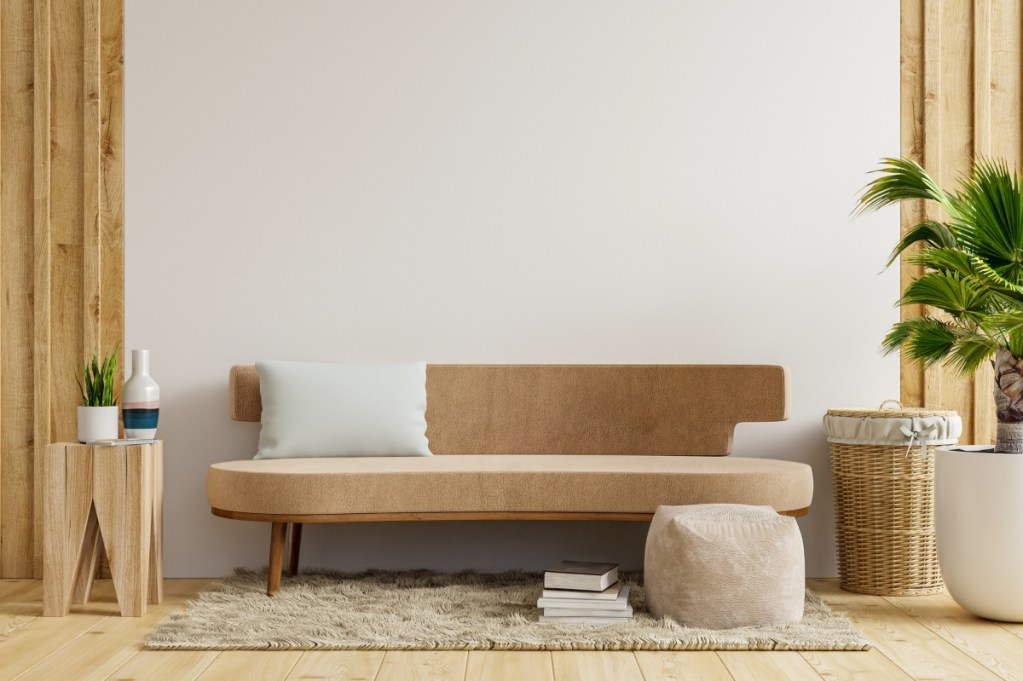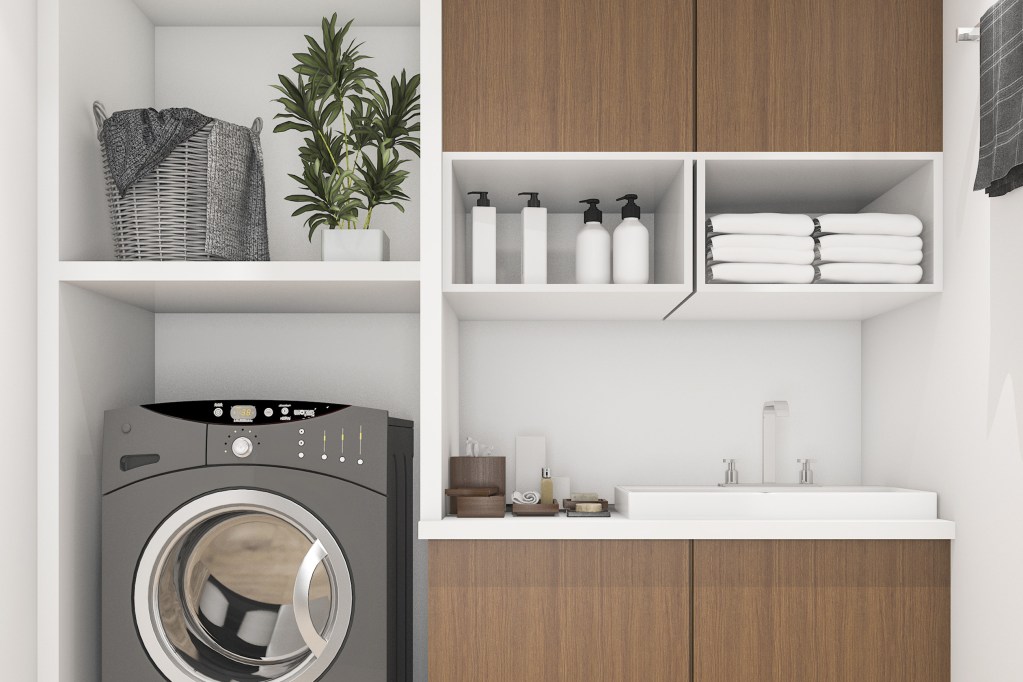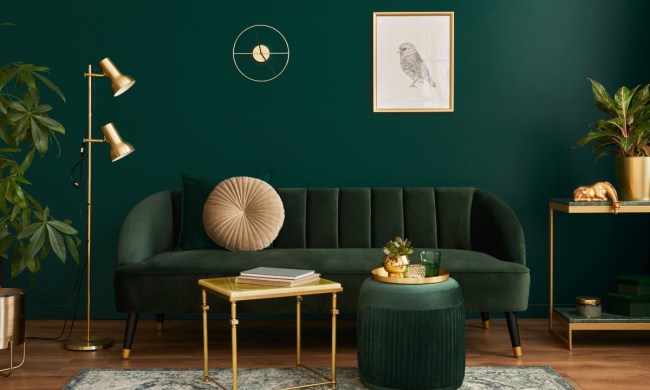If you’ve fallen in love with “hygge” minimalism, chances are you’ll be equally enamored with Japandi style. This new trend in home design marries two beloved aesthetics to create an entirely new field in interior design. Japandi is fresh, comforting, and perfect for those aiming for more simplicity within their space.
If you’re curious about what Japandi style is and if it’s right for you, then you’ve come to the right place. In this article, we’ll give you everything you need to know about this unique design style.
What is Japandi style?

The term “Japandi” stems from the union of two popular design styles, Scandinavian and Japanese. By combining the terms “Japanese” and “Scandi,” you get “Japandi.” Japandi is very similar to the Scandinavian concept of hygge, a design style focused on comfort and simplicity that has become widely known in the U.S. in recent years. However, Japandi style diverges from traditional hygge aesthetics by inviting more minimalism, functionality, and natural elements to create a peaceful and luxurious space.
Japandi vs. classic minimalism aesthetics

While Japandi is a type of minimalism, Japandi home styles differ slightly from classic minimalist aesthetics. Minimalism tends to lean toward white tones for the color palette, simple, straight lines, and decor with cooler undertones. Japandi, however, utilizes warmer color palettes and more natural curves. Japandi favors rounded shapes, natural materials, and wood tones.
Some homeowners interested in minimalism have shied away from the aesthetic due to the cold undertones and all-white look. Japandi offers warm, neutral color palettes and a more organic design style that feels more inviting to some.
Why do Scandi and Japanese designs blend so well?

In some ways, Japanese and Scandinavian home decor are quite similar, so it’s no surprise that a union of the two would result in a quaint and aesthetic style. Both styles favor comfort, minimalism, and intentionality. And where these two styles differ, Japandi style steps in to create the perfect contrast between the two for a stunning home design.
Japanese styles favor clean lines, rich color palettes, and sleek interiors. In contrast, Nordic and Scandi designs tend to be more stark, rustic, and less straight-edged. By combining these two styles, you gain a blend of these aesthetics, resulting in a space that is neither too cold nor too clean-cut.
How can you bring Japandi design to your home?

If you love the sleek appeal of Japanese home design and the rustic comfort of Scandi styles, then you’re likely going to fall head over heels for Japandi interior design. With its roots in minimalism and comfort, this style is perfect for lovers of hygge who want a fresh take on minimalist design. So, below are some of the best ways to invite Japandi style into your home.
Use natural materials
One of the easiest ways to bring Japandi style to life in your space is to use natural materials. Try incorporating unfinished and raw woods in your room through tables or chairs. Bamboo is a great wood species for a natural look that appeals to many minimal and modern aesthetics. Additionally, bring in a few plants to decorate your space. You could also opt for pale green or light neutrals in your home for a more natural color palette.
Have a muted color palette
A muted color palette is essential for pulling off a successful Japandi design. Try using colors like light cream, tan, off-white, pale gray, pale green, or dusty brown in your space. These colors provide a soft touch that is both warm and authentic. A color palette based on warm-toned neutrals is a great way to tie in the outdoor aesthetic of Scandinavian design while also maintaining the elegance of Japanese styles.
Keep things minimal
Of course, you can’t achieve Japandi design without focusing on minimalism. Minimalism is one of the core aspects of this style, so it’s important to do your best to reduce clutter as much as possible. Invest in sleek organizers or natural wicker baskets to help store away any visual clutter. Try to use open spaces to your advantage for an airy interior that feels light and refreshing.
However, you don’t have to let your space become too stark. Use plenty of different textures on rugs or furniture to invite a hygge feel to the space. Cozy knitted blankets, wool rugs, and plush cotton pillowcases are a great way to bring a sense of comfort to your home.
Focus on using quality pieces
When looking for decor pieces or artwork to bring into your design, it’s important to focus on quality. Japandi style favors quality craftsmanship, so the furniture and decorations you choose should feel curated and intentional. Nix the mass market creations for something handcrafted and high-quality. Try opting for pieces that will stand the test of time or have been created sustainably.
You don’t have to break the bank to find these quality items, either. Instead, use intention when making purchases, and remember that you don’t need a lot to adorn your space in a Japandi style, as minimalism is one of the core aspects of this design.
Japandi style is the perfect blend of rustic Nordic home design and elegant Japanese styles. It’s a way to blend minimalism and comfort while focusing on nature and quality pieces. Try to aim for a clutter-free space with items that feel intentional and curated to your design. While both Scandi and Japanese styles are nothing new to the world of home design, their union to create Japandi may be the next great trend for those looking for a simplistic and comforting approach to home design.




